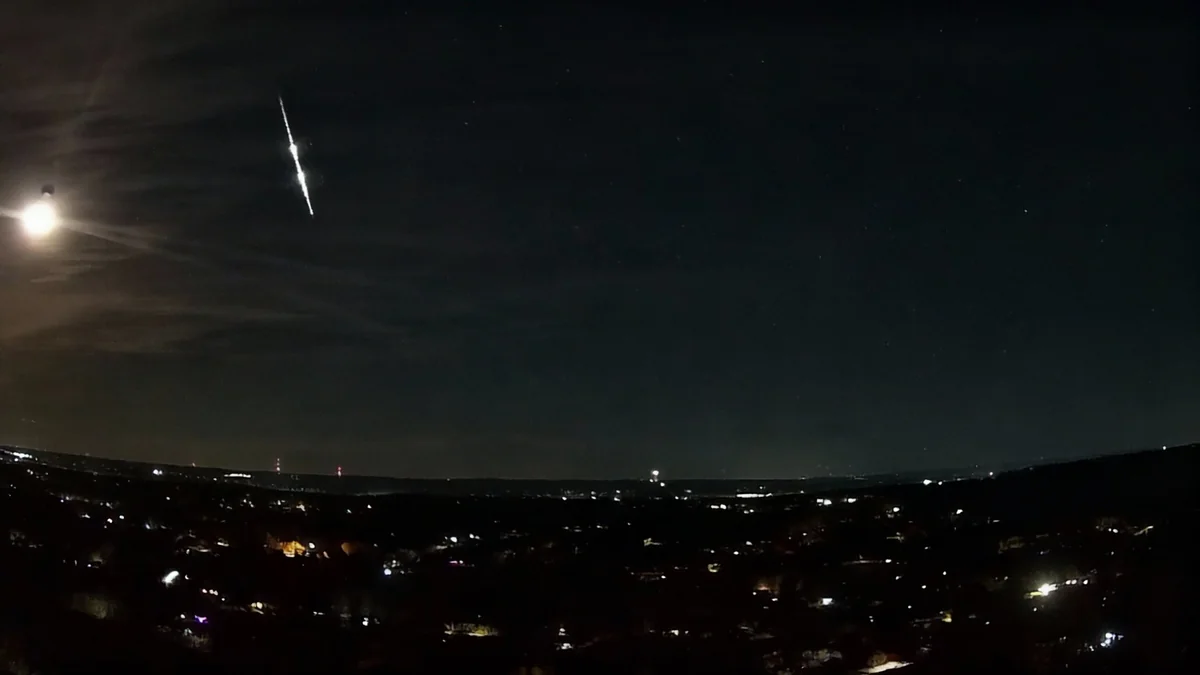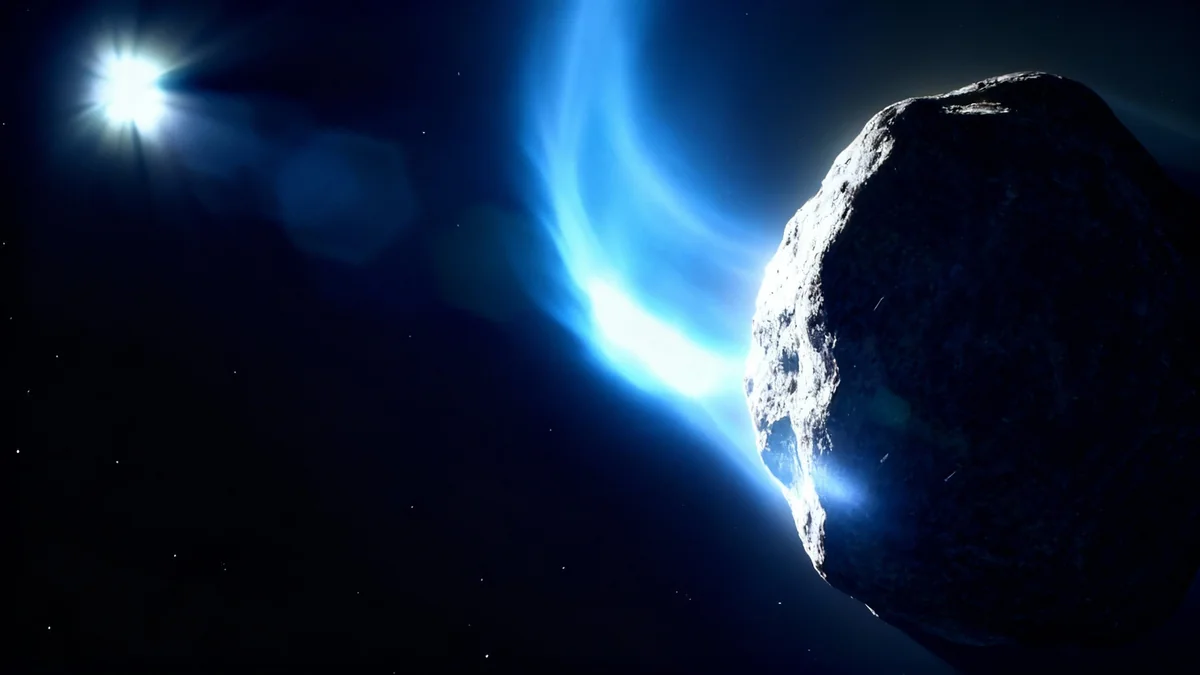A new study reveals that if life ever existed on Mars, evidence of it could be preserved within the planet's subsurface ice for tens of millions of years. Research led by NASA and Penn State University demonstrates that pure water ice acts as a powerful shield, protecting essential biological molecules from the harsh Martian radiation environment.
This finding suggests that future missions to the Red Planet have a strong chance of discovering traces of ancient microbes, provided they target the right locations. The study's results offer a clear roadmap for astrobiologists, pointing toward pure ice deposits as the most promising places to search for signs of past life.
Key Takeaways
- A recent study found that biomolecules, such as amino acids, can survive for at least 50 million years when trapped in pure Martian ice.
- In laboratory simulations, these molecules degraded 10 times faster when mixed with Martian soil ingredients compared to pure ice.
- The research identifies pure, subsurface ice deposits as primary targets for future missions seeking evidence of past life on Mars.
- The findings also suggest that colder icy moons like Europa and Enceladus could preserve biological evidence for even longer periods.
Simulating Martian Conditions in the Laboratory
To understand how Martian conditions affect biological material, scientists conducted a series of detailed laboratory experiments. The research team, a collaboration between NASA's Goddard Space Flight Center and Penn State University, aimed to replicate the environment found within the icy regions of Mars.
They began by preparing samples containing E. coli bacteria. These samples were then frozen in two distinct environments: one consisting of pure water ice and another that mixed water with minerals commonly found in Martian soil, such as silicates and clays.
Recreating a Hostile Environment
The samples were cooled to a frigid minus 60 degrees Fahrenheit (minus 51.1 degrees Celsius), a temperature representative of the subsurface ice on Mars. Once frozen, they were subjected to intense radiation, simulating the cosmic rays that constantly bombard the Martian surface.
The radiation exposure was equivalent to what the material would experience over 20 million years on the Red Planet. Using this data, the researchers then created models to project the degradation of the biomolecules over a much longer period, extending to 50 million years.
By the Numbers
- Preservation Window: Up to 50 million years in pure ice.
- Simulated Temperature: -60°F (-51.1°C).
- Degradation Rate: 10 times faster in soil-mixed ice.
- Amino Acid Survival: Over 10% of original amino acids remained in pure ice after the simulated 50-million-year exposure.
Ice Provides a Powerful Protective Shield
The results of the experiment were definitive. The researchers found that amino acids, the fundamental building blocks of proteins, survived significantly better when encased in pure water ice. In contrast, the samples mixed with Martian soil ingredients showed rapid degradation.
According to the study, more than 10% of the original amino acids were still intact after the simulated 50-million-year period in pure ice. However, the amino acids in the soil mixture did not survive this extended exposure. This outcome highlights the critical role that the surrounding environment plays in preserving biological evidence.
"These results suggest that pure ice or ice-dominated regions are an ideal place to look for recent biological material on Mars," stated Alexander Pavlov, the study's lead author and a space scientist at NASA Goddard Space Flight Center.
The Science of Preservation
The study explains why pure ice is such an effective preservative. When cosmic radiation strikes ice, it produces destructive particles known as free radicals. In pure, solid ice, these particles are trapped and immobilized, which significantly slows down their ability to break down biological molecules.
However, the presence of minerals, like those in Martian soil, changes the equation. These minerals can create thin, unfrozen films of liquid water within the ice, even at extremely low temperatures. These liquid films allow the destructive free radicals to move around freely, accelerating the damage to any organic material present.
What are Biomolecules?
Biomolecules are the molecules essential for life, including amino acids, proteins, and DNA. Amino acids are particularly important because they are the building blocks of proteins, which carry out most of the functions within a cell. Finding preserved amino acids on Mars would be a major indicator that life may have once existed there.
Guiding the Future Search for Life on Mars
This research provides crucial guidance for future missions designed to search for extraterrestrial life. By identifying the best preservation environments, scientists can better select landing sites and develop instruments capable of reaching these promising locations.
Most of the subsurface ice deposits currently known on Mars are believed to be less than two million years old. This age is well within the 50-million-year preservation window identified by the study, making these areas prime targets for exploration.
"Fifty million years is far greater than the expected age for some current surface ice deposits on Mars... meaning any organic life present within the ice would be preserved," explained Christopher House, a co-author of the study and professor of geosciences at Penn State University. "That means if there are bacteria near the surface of Mars, future missions can find it."
Implications for Mission Planning
Future rovers and landers will likely be equipped with drills designed to penetrate the Martian surface and extract ice core samples. The findings from this study, published in the journal Astrobiology, will help engineers design tools that can access these pure ice layers while avoiding contamination.
The study also has implications beyond Mars. The researchers noted that when they tested samples under even colder conditions, similar to those on Jupiter's moon Europa or Saturn's moon Enceladus, the rate of deterioration was reduced even further. This suggests that these icy worlds could potentially preserve biological evidence for hundreds of millions of years, making them compelling targets in the ongoing search for life in our solar system.





